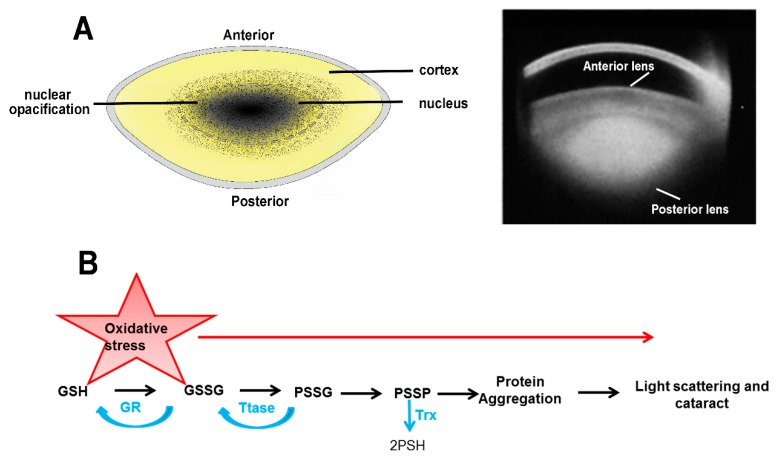Figure 2.
Nuclear cataracts. (A) Location of the nuclear cataract subtype. Left panel: diagram showing the opacities that form in the lens nucleus. Right panel: Scheimpflug slit-lamp photographic image revealing a nuclear cataract. (B) Molecular mechanisms involved in the pathogenesis of age-related nuclear cataract. GSH levels are maintained at high levels within the lens by a combination of pathways including regeneration of oxidised GSH (GSSG) back to GSH via the enzyme glutathione reductase (GR) as well as repair enzymes thioltransferase (Ttase), which dethiolate protein mixed disulfides, such as protein bound GSH (PSSG), and thioredoxin (TrX), that dethiolates protein-protein disulphides (PSSP). In age related nuclear cataract, depletion of GSH levels in the nucleus, but not the lens cortex, results in significant oxidation of nuclear proteins, an increase in protein mixed disulphides, formation of protein-protein disulfide bonds, protein aggregation, loss of protein solubility, increased yellowing of the lens nucleus, and eventual nuclear cataract formation.

